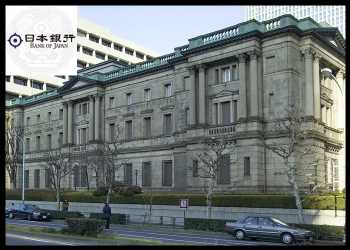
Bank Of Japan Keeps Policy Unchanged
The Bank of Japan maintained its negative interest rate and the yield curve control on Tuesday, and also retained its dovish forward guidance at the final meeting of the year.
The BoJ policy board, led by Governor Kazuo Ueda, unanimously decided to maintain a negative interest rate of 0.1 percent on current accounts that financial institutions maintain at the central bank.
The bank also decided to regard the upper bound of 1.0 percent for 10-year JGB yields as a reference in its market operations.
“With extremely high uncertainties surrounding economies and financial markets at home and abroad, the Bank will patiently continue with monetary easing while nimbly responding to developments in economic activity and prices as well as financial conditions,” the bank said.
The BoJ board said the economy is likely to continue recovering moderately for the time being, underpinned by factors such as the materialization of pent-up demand.
Japan’s economy is projected to continue growing at a pace above its potential growth rate once a virtuous cycle from income to spending gradually intensifies, the bank said.
Further, the board said underlying inflation is set to rise gradually toward achieving the price stability target, as the output gap turns positive and as medium- to long-term inflation expectations and wage growth rise.
Capital Economics’ economist Marcel Thieliant said he still expects policymakers to end negative rates in January.
Nonetheless, concerns about financial stability will encourage the bank to wait a few more months before officially abandoning Yield Curve Control later in 2024, the economist added.
As the governor mentioned that there is not much new data before the January meeting, the option of a rate hike won’t be on the table, ING economists said.
But in January, the release of macro outlook report and the US treasury rally will likely justify the change in the yield curve control policy, they noted.
ING expects the first rate hike to come sometime after in the second quarter.
Source: Read Full Article